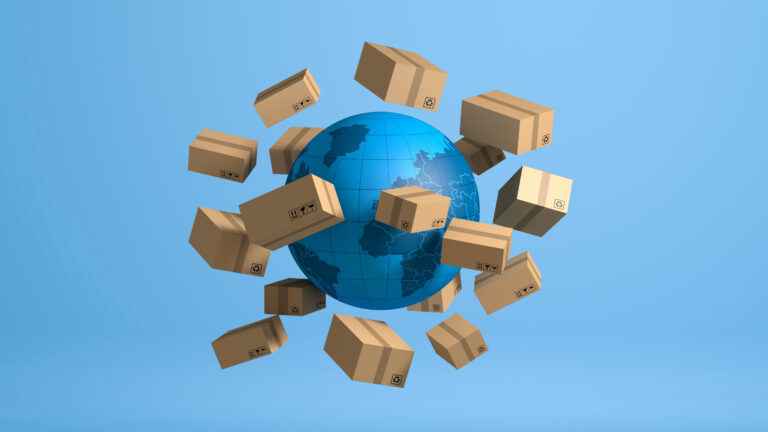At the recent Leaders in Logistics Summit on March 12-13 in Barcleona, Spain, the term ‘sustainability’ was frequently discussed, yet attendees noted a lack of consensus on its definition, measurement and incorporation into service offerings. This highlights a crucial challenge within the logistics industry: the need to delineate clear, actionable criteria for sustainability. Without a unified understanding, efforts to incorporate sustainable practices into parcel and postal operations remain fragmented, making it difficult for companies to operationalize sustainability and for consumers to make informed choices.
In a world where online shopping has become the norm, the conversation surrounding parcel delivery is experiencing a revolution, propelled by consumer demand for faster service and a growing consciousness about environmental impact. The dichotomy between instant gratification and eco-friendly choices is more pronounced than ever. This article aims to unwrap the latest innovations in parcel and postal technology that are redefining how logistics can harmonize speed with sustainability.
The instant gratification paradox
Most of us, particularly those of us in the logistics and e-commerce sector, can relate to the delivery companies’ convenience of receiving a parcel within hours of an order being placed. However, it’s imperative to question the cost of this convenience. Technology now enables us to trace the environmental route of their packages, similar to how energy efficiency is marked in electrical appliances. However, understanding the ‘why’ behind this is crucial before we delve into the ‘how.’
The green route versus the speedy route
Consider a pair of sneakers purchased from a local e-commerce store. One shipping option promises a week’s wait and concludes with parcel locker delivery, implying a consolidated delivery route with a minimal carbon footprint. This scenario is one of the most environmentally friendly. Conversely, a same-day delivery demands a unique, non-consolidated trip, irrespective of the vehicle type, earning a less eco-efficient status. This stark contrast raises the question of whether customers can make truly informed choices regarding delivery, and how we can assist them in distinguishing between different options.
Making sustainability visible
The crux of encouraging environmentally conscious decisions lies in visibility. In a similar way to how electrical appliances in the EU are rated and marked when displayed from A to G for energy efficiency, it’s possible to create a comparable system – the Universal Delivery Index (UDI) – for all deliveries that provides immediate insights into the sustainability impact of different shipping methods.
The integration of digital technology with logistics can computationally determine the precise eco-footprint of each parcel, empowering customers to see the real-time consequences of their choices. The potential of this technology to educate and inspire more sustainable behaviors cannot be overstated.
Core elements of the UDI
- Quantitative impact assessment: The UDI integrates various data points to calculate the environmental impact of delivery options. This includes CO2 emissions, energy use (whether from fossil fuels or renewable sources), and other relevant environmental metrics such as the effect on local biodiversity or water use for cooling electric vehicle batteries.
- Route and method optimization: The score considers the efficiency of the delivery route and the method of transportation. For example, deliveries that optimize route density and reduce the need for additional trips score higher. Similarly, the use of electric vehicles (EVs) or bicycles positively influences the score, while reliance on traditional petrol or diesel vehicles lowers it.
- Consolidation effect: The degree to which a delivery is consolidated with others to minimize trips plays a significant role in the UDI. More consolidated deliveries, such as those to a parcel locker or local collection point, receive a higher score compared to individual, direct-to-doorstep deliveries that require unique trips.
- Personnel time allocation: Recognizing the human element in logistics, the UDI also considers the efficiency of personnel time use. Options that ensure delivery workers’ routes are optimized for both time and environmental impact are rated more favorably.
With the pre-calculated UDI, customers can see at the e-commerce checkout the UDI score for every delivery method. Based on that information, making an educated decision when choosing a delivery method becomes easier.
The way forward
The rise of smart cities presents an opportune platform for the parcel and postal service to evolve. Intelligent networks and IoT devices will soon enable the seamless flow of information, ensuring deliveries are not just swift but also sustainably smart. Blockchain could potentially offer unparalleled transparency in the supply chain, fostering trust and responsible consumerism.
Conclusion
The parcel and postal industry is at the cusp of a significant transformation, with the balance between speed and sustainability as the fulcrum. Often, the path between today’s innovations and tomorrow’s standard practices is drawn by consumer choice. It is both a challenge and an opportunity for professionals in logistics and e-commerce to shape these choices by harnessing the power of technology. With evermore sustainable delivery, we move closer to a future where instant gratification and environmental responsibility are not mutually exclusive but collaborative elements of a well-oiled delivery system.


